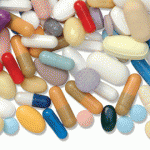
Cross Reactions
A recent study published online in March in the Annals of the Rheumatic Diseases investigated if the infliximab biosimilar (CT-P13, infliximab-dyyb), which is marketed in Europe as Inflectra and Remsima, can be safely and effectively substituted for infliximab (Remicade).1 Infliximab and its biosimilar are manufactured via the same process. Researchers set out to determine whether those patients with antibodies to infliximab would mount a similar response to the infliximab biosimilar (CT-P13). Two-hundred and fifty patients with rheumatoid arthritis (RA) and spondyloarthritis undergoing infliximab treatment who had never been exposed to CT-P13 were evaluated.
All patients treated with infliximab who had antibodies to infliximab cross reacted with CT-P13, either Inflectra or Remsima. The authors note that the epitopes raising the immune response to infliximab demonstrate the same degree of reactivity to the infliximab biosimilar. However, due to different glycosylation patterns or impurities, CT-P13 may possess its own unique epitopes.
The authors caution that patients on infliximab who have developed antibodies to infliximab should not be switched to an infliximab biosimilar because the antibodies to the innovator product may interact with the new infliximab molecule and potentially lead to loss of clinical response and infusion-related reactions.
Early vs. Late bDMARD Initiation
The efficacy of the first bDMARD (biological disease-modifying anti-rheumatic drug) was evaluated in patients with RA following international recommendations on a treat-to-target strategy (n=113) and compared with the delayed initiation of bDMARDs (usual care, n=250) in an outpatient clinic.2 DAS-28 was used to measure disease activity until the end of treatment with the bDMARD. Remission or low disease activity was considered a good response. Treatment efficacy was measured at Months 3, 12, 24 and 36, and at the end of treatment. Kaplan–Meier plots were completed to assess the likelihood of realizing a good response. These plots showed that the likelihood for a good response was significantly higher in the treat-to-target patients (P<0.001).
Efficacy of the three classic bDMARDs—adalimumab, etanercept and infliximab—was comparable. The hazard ratio of the likelihood of achieving a good response was 1.71 (95% CI 1.18–2.47, P=0.004) in favor of the treat-to-target group. A total steroid dose greater than 500 mg and range of six to 10 swollen joints were considered negative predictive factors for a good response. Etanercept and the newer bDMARDs appeared more effective than adalimumab or infliximab.
The authors concluded that a treat-to-target strategy using bDMARDs provides a faster response and better long-term outcomes in RA patients compared with delaying treatment initiation with bDMARDs.
Certolizumab Pegol Combination Therapy
DMARD-naive patients with early rheumatoid arthritis (RA) who used certolizumab pegol along with dose-optimized methotrexate (MTX) experienced sustained remission, sustained low disease activity, improved physical function and inhibited structural damage compared with patients who received dose-optimized MTX along with placebo in a 52-week study.3 Patients enrolled in the study had to have active RA, which was defined as having four or more swollen and four or more tender joints, a Disease Activity Score in 28 joints (DAS28) greater than 3.2, and an erythrocyte sedimentation rate (ESR) of at least 28 mm/h or a C-reactive protein of ≥10 mg/L. The mean patient age was 50, and the majority (approximately 75%) were female.



